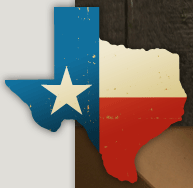Monday, November 15, 2010
Helpful Hints for Car Travel with your Four Legged Friend

While driving in your car, you might think that if you talk on your cell phone or text a message that these are the only ways to be distracted; however, many other activities that take your eyes off the road or your attention from the windows or mirrors can also be the cause of a crash. Having your pet jump from the back to the front or sit on your lap can also be a problem.
Just like a child, your pet should be safe in the car. The back seat in the middle is considered the safest place in your car. If someone or something is sitting in your back seat and there is an incident or you have to stop short they could fly into the front and get injured as well as injuring you.
Although, a carrier is sometimes suggested for your pet, it should be tied down so that it does not lift out of its place to injure someone or your pet that is inside the cage or carrier.
Pet Safety Belts are the answer to car travel. There are restraints that use the car safety belt hooks and that offer the pet some mobility yet prevent distraction, protect passengers from injury, and reduce any possible injury to the pet. In addition, you as the driver will have better control and more comfort knowing that everyone in your car is safe. If a crash should occur, rescue workers appreciate the fact that an upset animal is properly restrained so that they can aid everyone in the vehicle.
If you are planning a vacation that involves a long car trip the ASPCA (The American Society for the Prevention of Cruelty to Animals) has some tips for taking your pet with you.
- Take a well-ventilated carrier that is big enough for your pet to move around. Let your animal friend get used to it in the comfort of your home before you leave.
- Take your pet on short drives to get used to their vehicle restraint or carrier/crate.
- Your pet’s travel feeding schedule should start with a light meal 3 to 4 hours prior to departure. Don’t feed them in a moving vehicle.
- Never leave your pet alone in a parked vehicle. On a hot day, a parked vehicle can become a very hot and heatstroke can develop.
- A pet's traveling kit should include travel papers, food, bowl, leash, a waste scoop, plastic bags, grooming supplies, medication, a pet first-aid kit, a favorite toy and a blanket or pillow.
- Make sure your pet has a microchip for identification and wears a collar with tag imprinted with your home address, also a temporary tag with the destination phone number and any other pertinent information.
- Pets should be fitted with flat collars. Choke collars should not be used.
- Do not allow your pet to ride with his head outside the window. They could be injured by flying objects.
- If you will be traveling across state lines, be sure to bring along their rabies vaccination record, just in case it is needed.
- Bring your own water. Take along a jug with the water that your pet is used to, or take along bottled water. Using water from the tap from different areas might cause some stomach problems.
Taking some precautions and planning in advance will help make your car trips fun for everyone.
Of course, it is important to remember - SAFETY FIRST.
Labels: car travel, distracted driving, pet safety belts, prevent distracted driving, traveling with pets, vehicle safety
Posted by DriverSchool
at
12:11 PM


Visit Us
Search
Loading
Categories
Recent Posts
- Houston Texas Healing Fields
- Texas ‘Know When to Pass’ Campaign
- Del Rio: City Considering Texting Ban
- Texas Tornado Safety
- Driver Responsibility Program: Moving Violation Fi...
- Driver Safety Tips for Halloween
- The Great Texas Plate Auction 2011
- Things to Consider Before You Hop on an All Terrai...
- Knowing When to Pass (Your Keys)
- Texas Driver Responsibility Assessment Law





0 Comments:
Post a Comment
Note: Only a member of this blog may post a comment.
Subscribe to Post Comments [Atom]
|<< Home